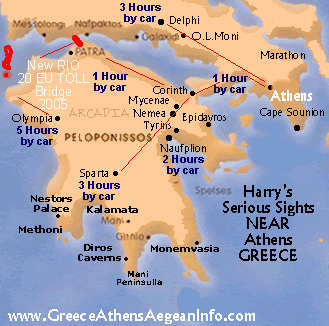 "This colonnade has first of all the Athenians on it, drawn up at Oinoe in the Argolid against Spartans. This is not a painting of the full event, the rage of battle, or particular deeds of daring, but the first moments of a battle as the armies come to grips. On the middle part of the walls Theseus and his Athenians are fighting Amazons.
"This colonnade has first of all the Athenians on it, drawn up at Oinoe in the Argolid against Spartans. This is not a painting of the full event, the rage of battle, or particular deeds of daring, but the first moments of a battle as the armies come to grips. On the middle part of the walls Theseus and his Athenians are fighting Amazons.
Only with women is it true that nothing bad that happens to them can take away their appetite for trouble. Themiskyra fell to Herakles and the fighting force they sent against Athens was wiped out, and yet they still went to Troy and fought there against Athens and the whole of Greece.
Next to the Amazons, the Greeks have just taken Troy and the princes are meeting over Ajax's crime against Kassandra; the painting shows Ajax and the wives of the prisoners of war with Kassandra amongst them. The last part of the painting is the men who fought at Marathon; the Boiotians from Plataea and men from all over Attica are coming to grips with the barbarians: things are about equal.
But in the heart of the battle the barbarians are in flight, pushing each other into the marsh, and the painting ends with the Phoenician ships, and with Greeks slaughtering barbarians as they jump into them."
In the course of time the Painted Stoa seems to have developed into a kind of 'War Museum'. Pausanias also mentions seeing bronze shields, which were taken as spoils during wars. One such bronze shield, taken from a Spartan soldier in the battle of Sphacteria in 425 BC (during the Peloponnesian War) has been found in a cistern next to the Stoa. The shield is in the Agora Museum and has the following inscription: 'The Athenians from the Lakedaimonians at Pylos'.
The Painted Stoa was occasionally used for official proclamations, for instance concerning religious festivals, and court sessions. It was not built, however, with one specific function in mind, whether political, religious or commercial. Instead, the Painted Stoa developed into a popular and freely accessible 'hang out' for different groups. Ancient authors say that the Stoa attracted street artists such as sword-swallowers and jugglers, as well as fishmongers and beggars. A more distinguished visitor of the Painted Stoa was the philosopher Zeno, who came to Athens from Cyprus around 300 BC. He used the Stoa to meet his pupils, who then became known as 'Stoics'.

Athens,
Cape Sounion, Ancient Corinth, Delphi & Ossios Lukas, Drama, Florina, Greneva, Chalkidiki, Imathia, Kastoria, Kavala, Kozani, Meteora, Mt. Athos, Mycenaea, Naufplion, Olympia, Pella and Vergina, Phillipi & Kavala, Dion & Mt Olympus, Sparta & Mystras, The Mani and Monemvasia, Thessaloniki,
READ TESTIMONIALS
E-mail for prices and availibility